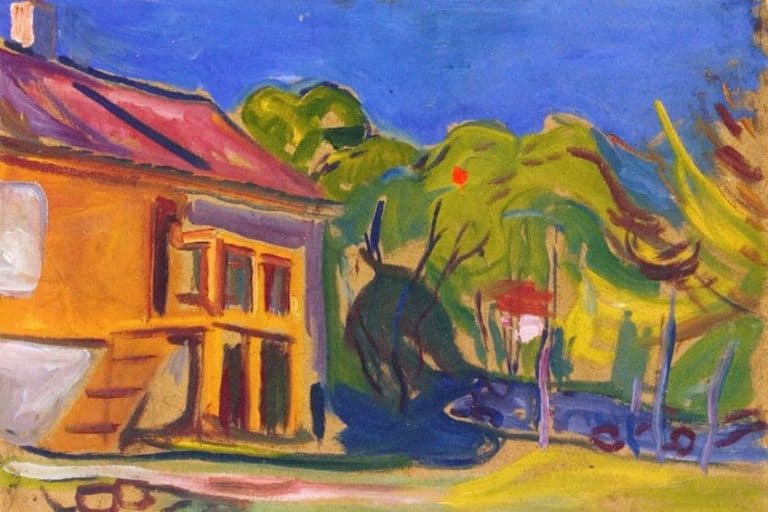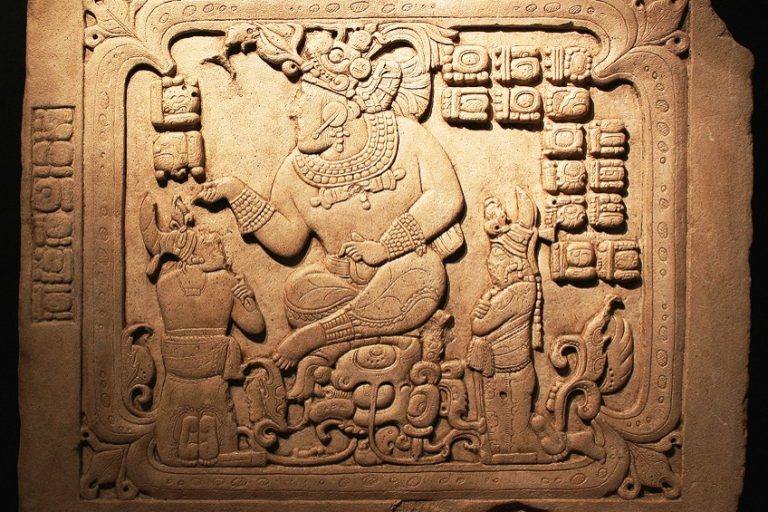Aboriginal Art – Preserving Indigenous Australian Culture in Art
Aboriginal art is a vibrant and significant cultural expression that encompasses a rich history and deep spiritual connection to the land. Originating from Indigenous Australian communities, this art form encompasses a diverse range of styles, techniques, and themes, reflecting the deep-rooted traditions, stories, and beliefs of the Aboriginal peoples. From intricate dot paintings that symbolize ancestral connections to vibrant depictions of Dreamtime narratives, Aboriginal art offers a unique insight into the world’s oldest continuous artistic tradition. In this article, we delve into the fascinating world of Aboriginal art, exploring its origins, key characteristics, cultural significance, and contemporary evolution.
Key Takeaways
- Aboriginal Art is a deeply cultural practice that captures the essence and traditions of Indigenous Australians.
- It has adapted over time to find a significant place in the modern art world, becoming a symbol of Indigenous resilience.
- The Indigenous art market has created avenues for artists to sustain their cultural heritage while engaging with broader audiences.
Historical Context of Aboriginal Art
Aboriginal Art serves as a vibrant expression of the world’s longest surviving culture, which spans back over 60,000 years. Originating from the Indigenous people of Australia, this art form is deeply intertwined with the cultural identity of Aboriginal Australians, serving as both a reflection of their rich heritage and a means of conveying ancestral stories, customs, and laws. The art often incorporates an array of symbols and patterns that hold specific meanings, revealing stories of the ‘Dreaming’—the Aboriginal understanding of the world’s creation and its profound spiritual framework.

Over time, Aboriginal Art has evolved, demonstrating resilience and adaptability while retaining its traditional essence. In the early 1970s, the movement gained momentum as Aboriginal artists began to receive greater recognition, leading to the establishment of the Indigenous art market. This market has since played a vital role in the preservation and dissemination of Aboriginal culture, allowing the art to resonate with a wider audience and providing economic benefits to Indigenous communities.
Simultaneously, it has sparked discussions on the importance of cultural sensitivity and the ethical consideration of Aboriginal Art within the contemporary art world.
Rock Art and Ancient Carvings
Indigenous Australia holds some of the oldest surviving rock art, such as in Arnhem Land and the Kimberley region. The Narwala Gabarnmang Rock Shelter, for instance, showcases rock carvings and paintings that are over 28,000 years old, but evidence suggests they may date back as far as 44,000 years. Notably, Murujuga, which hosts the largest collection of petroglyphs globally, features carvings that depict now-extinct species such as the Genyornis and Thylacoleo, indicating the art is tens of thousands of years old. Ancient species depicted include the Genyornis (extinct bird) and the Thylacoleo (marsupial lion).

Aboriginal Dreaming
The term “Dreamtime” or “Dreaming” represents the Aboriginal understanding of the world, its creation, and its great stories. Aboriginal Art is a vehicle through which these Dreaming stories are expressed and preserved. The Dreaming governs the laws of community, cultural practices, and the relationship with the land. Contemporary Aboriginal Art, as initiated by Geoffrey Bardon in the 1970s with the Papunya Tula Artists collective, has been instrumental in bringing these stories and the heritage of both Aboriginal and Torres Strait Islander Art to international recognition.
- Papunya Tula artists: A key art movement reviving traditional Aboriginal Art in contemporary forms.
- Geoffrey Bardon: An influential teacher who encouraged the use of traditional motifs in modern Aboriginal Art.
Artistic Techniques and Symbolism
Aboriginal art embodies deep-seated symbolism and a variety of techniques to express the rich tapestry of Indigenous Australian culture. These practices reflect the traditional lifestyles intertwined with the Dreamings and territorial identities.

Iconic Dot Painting
Dot Painting is a hallmark of Aboriginal art known for its intricate patterns and use of color. It evolved as a way to veil sacred and clandestine elements of their Dreamings when paintings were increasingly exposed to outside audiences.
Artists use dots to conceal and reveal the underlying stories associated with their cultural and spiritual heritage.
Use of Natural Materials and Colors
Aboriginal artists traditionally employ natural materials to create their work. Ochres, such as white, yellow, and red ochre, are commonly used to produce colors and textures. Red ochre is particularly significant in ceremonial clothing and in some regional body painting traditions. Other materials include bark, which serves as a canvas for bark paintings, and natural fibers, used in string art and weaving. Common materials used include:
- Ochres (for paint)
- Plants (for dyes and weaving)
- Bark (as a canvas)
- Feathers and shells (for ceremonial attire)

Styles and Forms Across Regions
Distinctive styles and forms have developed across regions, influenced by local Dreamings and the environment.
- Kimberley region: Known for ancient rock art and naturalistic styles of painting.
- Yirrkala: Recognized for bark paintings featuring detailed rarrk (cross-hatching) patterns.
- Central Australia: Dot paintings traditionally used to symbolize Dreamings are dominant here.
- Northern regions: Influences from Macassan trepang fishermen are seen, especially in the use of cross-hatching and design elements reflecting this historical contact.
The diverse use of symbols and patterns across regions is reflective of the individual expressions within Aboriginal culture, with differences in techniques such as weaving, string art, and body painting highlighting the diversity of Aboriginal artistic traditions.
Aboriginal Art in the Modern World
The transformation of Aboriginal art in modern times has been remarkable, evolving from traditional expressions to vibrant contemporary art that communicates identity and the cultural significance of the indigenous community.

The Emergence of Contemporary Aboriginal Art
Contemporary Aboriginal art emerged in the early 1970s when a group of Aboriginal men at Papunya Tula formed an artists’ cooperative, effectively placing Indigenous Art in the spotlight. This movement gave birth to new art forms which saw traditional symbols and Dreaming stories integrated into modern mediums. Galleries and museums around the world started to showcase these works, with exhibitions in spaces like the National Gallery of Australia and The Metropolitan Museum of Art.
Fine art collectors invested in these pieces, appreciating the unique blend of ancient culture and contemporary expression.
- The movement provided a significant boost to the community, creating opportunities and increasing visibility.
- Collectors were, and still are, encouraged to ensure the authenticity of artworks through Certificates of Authenticity.
Art as a Reflection of Identity and Community
In Aboriginal culture, art is not just a creative outlet but a means of preserving language groups and community narratives. It serves as a potent form of storytelling, intertwining the Dreaming stories and the spiritual essence of Indigenous art into a contemporary framework.
- The Aboriginal Memorial is one example, remembering lives lost since European settlement through the medium of art.
- Contemporary art has become a vessel for Aboriginal people to express their enduring connection to land, culture, and heritage.

By translating traditional motifs and stories into art for the modern world, Aboriginal artists ensure the continuation and evolution of their culture. These artworks have not only become a source of identity for the communities but also an intriguing and valuable facet for the global fine art market.
The Rise of the Indigenous Art Market
The Indigenous art market has experienced significant growth, particularly evident through rising auction prices and sales that benefit local economies and communities. Investors and collectors have increasingly turned their attention to Aboriginal art, recognizing not only its cultural significance but also its potential for financial appreciation. Sotheby’s in New York reported notable auction results, such as the sale of Emily Kame Kngwarreye’s “Alhalkere—Old Man Emu with Babies” (1989).
Additionally, events like the Darwin Aboriginal Art Fair have drawn thousands of visitors, contributing substantially to the local economy with A$15 million raised in 2018 alone.

Collectors also appreciate the direct support their investments provide to the artists and their communities. The AIATSIS Indigenous Art Market is one such venue where 100% of sales go back to the Indigenous art centers and artists. For the discerning collector, Aboriginal art has proven to be an area of art investment worth considering, offering both cultural enrichment and economic benefit.
Aboriginal art stands as a testament to the rich cultural heritage, artistic ingenuity, and spiritual depth of Indigenous Australian communities. Through its diverse styles, intricate symbolism, and profound storytelling, Aboriginal art not only preserves ancient traditions but also serves as a powerful medium for cultural resilience and identity expression. As we continue to appreciate and celebrate the beauty and significance of Aboriginal art, it is essential to recognize and respect the deep connection between art, culture, and the land that has shaped this remarkable artistic legacy.
Frequently Asked Questions
What Is the Significance of Symbols in Aboriginal Art?
In Aboriginal art, symbols are used to communicate complex stories and traditions. These symbols represent elements from the natural world, aspects of Aboriginal spirituality, and significant cultural narratives tied to the Dreamtime—the epoch believed by Indigenous Australians to be when the world was created.
How Is Dot Painting Significant in Aboriginal Art Culture?
Dot painting is a technique utilized in Aboriginal art that has deep cultural significance. It originated as a method to obscure sacred and secret elements of stories when they were depicted in front of those not initiated. This style has become recognizable as a key identifier of Aboriginal art, with dots often used to create the outlines of forms and undertake detailed patterning.
What Are the Traditional Animals Depicted in Aboriginal Art?
Traditional animals depicted in Aboriginal art include the kangaroo, emu, turtle, snake, and lizard among others. They are not just fauna representations but carry with them spiritual and totemic meanings. These animals are often associated with Dreamtime stories that explain their creation and place within Aboriginal cosmology.
Isabella studied at the University of Cape Town in South Africa and graduated with a Bachelor of Arts majoring in English Literature & Language and Psychology. Throughout her undergraduate years, she took Art History as an additional subject and absolutely loved it. Building on from her art history knowledge that began in high school, art has always been a particular area of fascination for her. From learning about artworks previously unknown to her, or sharpening her existing understanding of specific works, the ability to continue learning within this interesting sphere excites her greatly.
Her focal points of interest in art history encompass profiling specific artists and art movements, as it is these areas where she is able to really dig deep into the rich narrative of the art world. Additionally, she particularly enjoys exploring the different artistic styles of the 20th century, as well as the important impact that female artists have had on the development of art history.
Learn more about Isabella Meyer and the Art in Context Team.
Cite this Article
Isabella, Meyer, “Aboriginal Art – Preserving Indigenous Australian Culture in Art.” Art in Context. April 10, 2024. URL: https://artincontext.org/aboriginal-art/
Meyer, I. (2024, 10 April). Aboriginal Art – Preserving Indigenous Australian Culture in Art. Art in Context. https://artincontext.org/aboriginal-art/
Meyer, Isabella. “Aboriginal Art – Preserving Indigenous Australian Culture in Art.” Art in Context, April 10, 2024. https://artincontext.org/aboriginal-art/.











